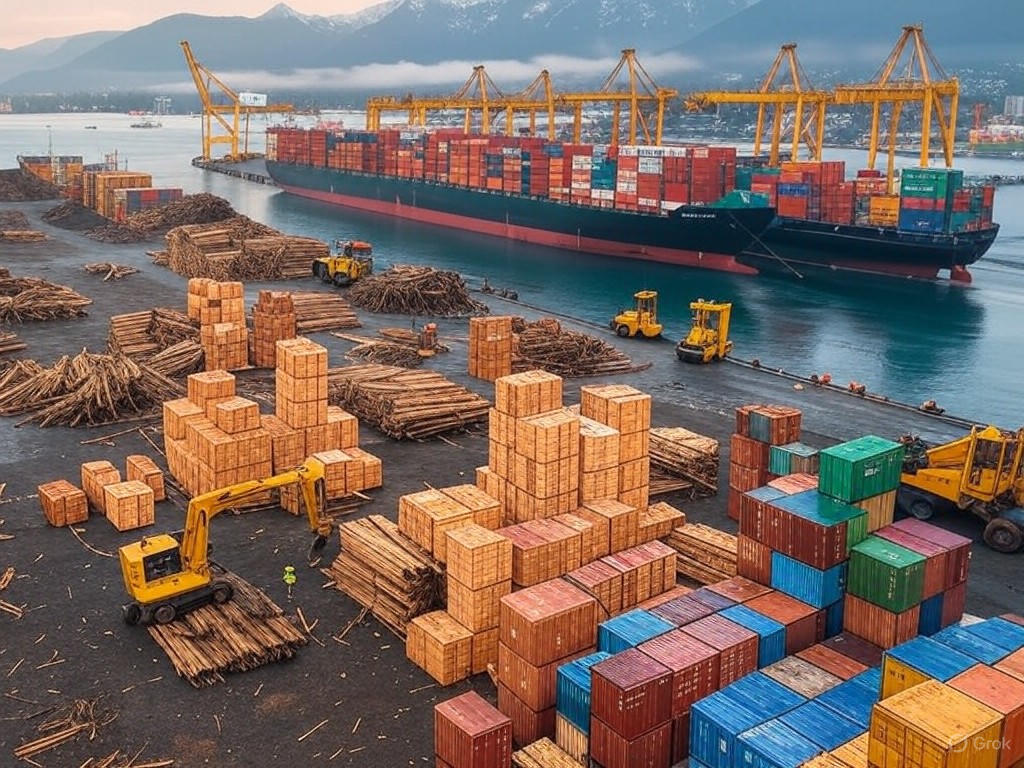BC’s Infrastructure Strategy: Competing in Global Markets
In the vast expanse of Canada's western frontier, where towering mountains meet the Pacific's endless blue, British Columbia stands as a gateway to the world. Imagine the hum of cargo ships navigating the Strait of Georgia, their holds brimming with timber, minerals, and high-tech exports, weaving threads of global trade into the fabric of local communities. Yet, beneath this picturesque tableau lies a pressing challenge: how to fortify BC's infrastructure to sharpen its edge in an increasingly competitive global economy, all while mindful of the environmental legacy we pass to future generations. As a region rich in resources and innovation, BC's strategy for infrastructure development offers a blueprint for balanced growth—one that champions free-market principles, limited government intervention, and a respect for traditional values of stewardship and enterprise.
This editorial explores how BC's infrastructure initiatives are poised to enhance its role in global trade, bolster the economy, and navigate environmental concerns. Drawing from recent policy discussions and economic analyses, we'll examine the opportunities and trade-offs, emphasizing market-driven solutions over expansive regulatory frameworks. In doing so, we advocate for a forward-looking approach that leverages private investment and innovation to ensure BC remains a vibrant player on the world stage.
The Vision for Infrastructure in British Columbia
British Columbia's infrastructure strategy, as outlined in recent provincial plans, centers on modernizing ports, roads, and digital networks to facilitate smoother global trade flows. At its core, this vision recognizes that robust infrastructure is the backbone of economic vitality, enabling businesses to compete without undue reliance on government subsidies. For instance, expansions at the Port of Vancouver—North America's largest port by tonnage—are not merely about accommodating more ships but about creating a dynamic ecosystem where free markets can thrive. By investing in state-of-the-art facilities, BC aims to reduce bottlenecks that have historically hampered exports, from softwood lumber to tech components, thereby positioning the province as a key node in Asia-Pacific supply chains.

This image captures the bustling activity at the Port of Vancouver, where new cranes and terminals symbolize BC's commitment to efficient global trade, fostering economic resilience amid international uncertainties.
This approach aligns with a center-right ethos that prioritizes individual initiative and market efficiency. As The Wall Street Journal notes in its analysis of North American trade corridors, regions like BC that embrace public-private partnerships often outperform those bogged down by bureaucratic overreach. Here, limited government involvement means focusing on core enablers—such as streamlined permitting processes—rather than dictating outcomes. Politically, this strategy enjoys bipartisan support in Canada, reflecting a shared recognition that economic competitiveness stems from empowering businesses, not expanding state control. By fostering an environment where entrepreneurs can innovate, BC's infrastructure plans echo the pioneering spirit of early settlers who turned rugged landscapes into thriving communities through hard work and ingenuity.
Economic Analysis: Driving Growth in Global Trade
The economic imperative behind BC's infrastructure push is clear: in a world of volatile supply chains, enhancing connectivity is essential for sustaining prosperity. Data from the past decade shows that BC's exports have grown by over 40%, driven by demand for its natural resources and emerging sectors like clean energy technology World Economic Forum. Yet, without modern infrastructure, this growth risks stalling. Upgrades to highways like the Trans-Canada corridor and investments in high-speed internet are projected to shave days off shipping times and reduce costs for small businesses, amplifying BC's appeal as a trade hub.
Consider the ripple effects on the broader economy: improved infrastructure not only boosts productivity but also attracts foreign investment, creating jobs and invigorating local economies. A study by the Fraser Institute, a think tank advocating for free-market policies, highlights how such developments can lead to a 2-3% annual GDP increase in resource-dependent regions like BC Fraser Institute. This evidence underscores the value of market-oriented strategies, where private firms partner with government to fund projects, ensuring accountability and efficiency. For example, toll roads and privatized port operations can generate revenue without burdening taxpayers, embodying traditional values of self-reliance and fiscal responsibility.
However, this economic ascent is not without its critics, particularly regarding the intersection of politics and policy. Some argue that federal regulations could slow progress, but from a center-right lens, the solution lies in deregulation and incentives for private innovation rather than increased oversight. As The Globe and Mail reports, BC's government has wisely pursued trade agreements like the CPTPP (Comprehensive and Progressive Agreement for Trans-Pacific Partnership), which open doors to new markets without compromising sovereignty. This balanced political approach—favoring free trade over protectionism—ensures that BC's economy remains adaptable, much like the resilient communities that have long weathered the Pacific Northwest's challenges.

This photo illustrates the careful integration of new logging roads in BC's forests, showcasing how infrastructure can support resource extraction while preserving the natural beauty that defines the region's heritage.
Evidence and Environmental Concerns: A Balanced Path Forward
While the economic benefits are compelling, concerns about environmental impacts cannot be ignored. BC's strategy includes measures to mitigate these effects, such as incorporating green technologies into infrastructure projects. For instance, the province's push for electric vehicle charging stations along major routes not only reduces emissions but also aligns with market demands for sustainable practices IEEE Spectrum. Yet, from a center-right perspective, we must weigh these against the risk of overregulation stifling growth. Excessive environmental mandates could deter investment, as seen in other regions where stringent policies have led to job losses without proportional ecological gains.
Evidence from recent projects supports a pragmatic approach. A review of the Site C dam expansion reveals how targeted infrastructure can enhance energy security while minimizing habitat disruption, thanks to voluntary conservation efforts by private stakeholders Natural Resources Canada. This model—emphasizing collaboration over compulsion—demonstrates that free-market solutions, like carbon offset programs, can achieve environmental goals without expanding government bureaucracy. Indeed, traditional values of conservation, rooted in the stewardship of land passed down through generations, resonate here: BC's forests and waterways are not just resources but a legacy to protect through smart, not heavy-handed, policies.
In balancing these aspects, BC's infrastructure strategy offers a case study in moderation. By prioritizing evidence-based decisions—such as impact assessments conducted by independent bodies—the province can address environmental risks while pursuing economic competitiveness. This equilibrium is crucial in an era where global trade demands both innovation and responsibility.
Conclusion: Charting an Optimistic Future
As we look to the horizon, British Columbia's infrastructure ambitions paint a vivid picture of possibility. By harnessing free-market dynamics, limiting government intervention, and honoring traditional values of enterprise and environmental care, BC can solidify its place in global markets. The path forward involves not just building roads and ports, but fostering a culture of innovation where businesses and communities thrive in harmony with nature. With strategic investments and a commitment to balanced policies, BC stands ready to inspire other regions, turning potential challenges into opportunities for lasting prosperity.
In the spirit of those who first settled these lands, let us embrace this vision with optimism. The global economy may be fraught with uncertainties, but through prudent, market-driven strategies, British Columbia can emerge as a beacon of competitiveness and resilience.

